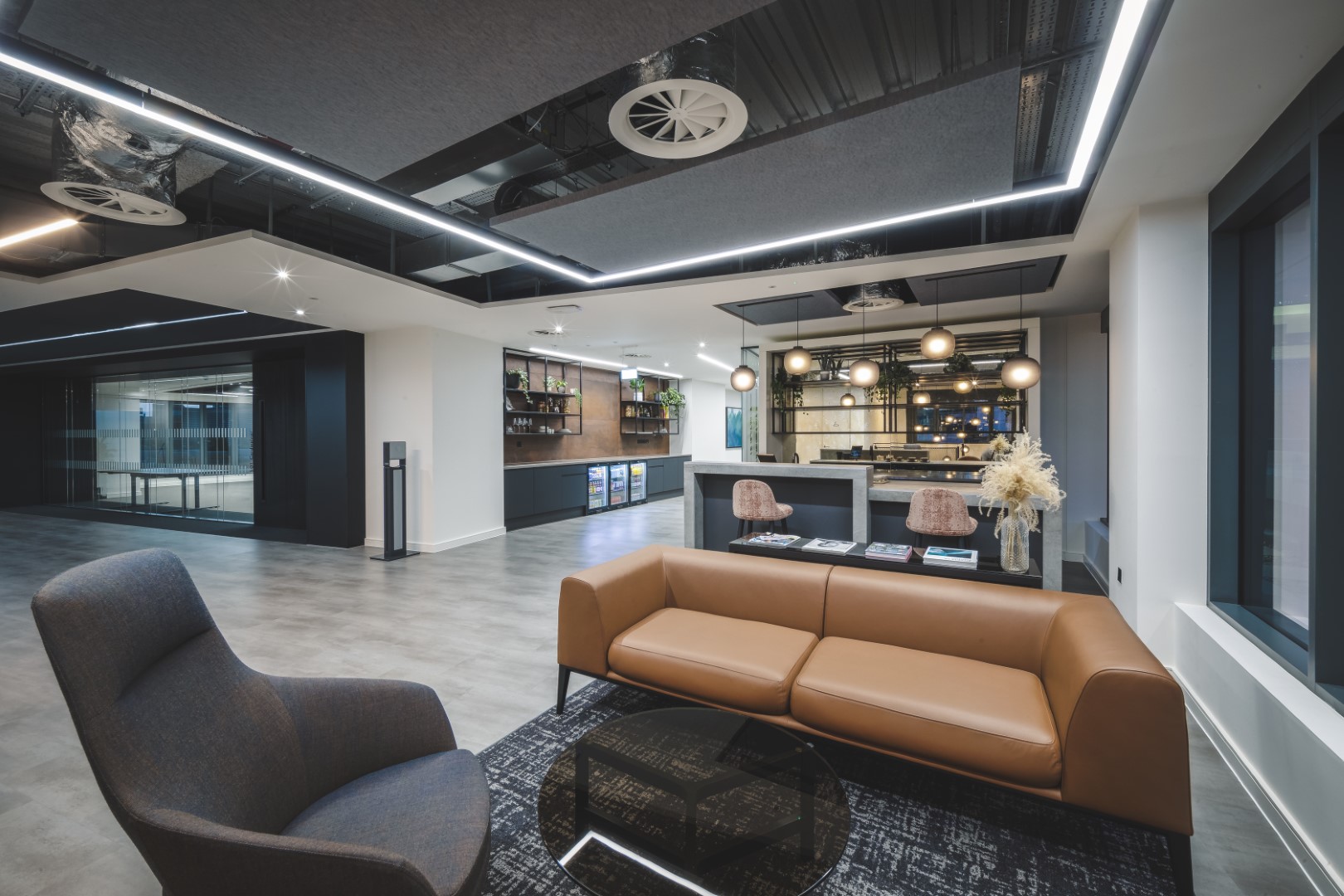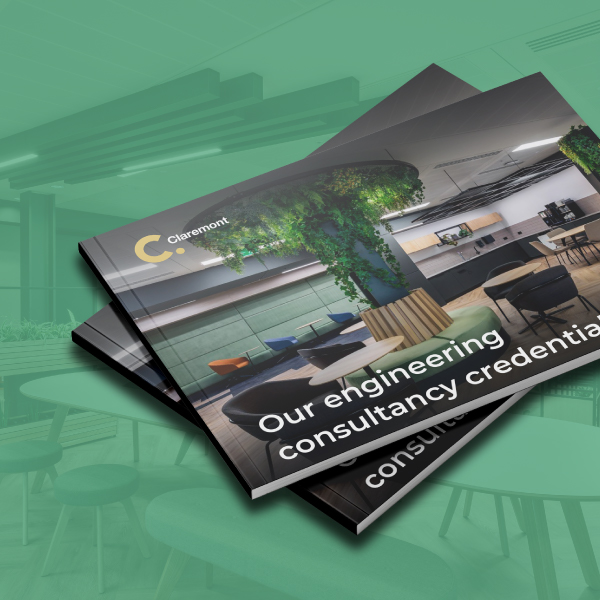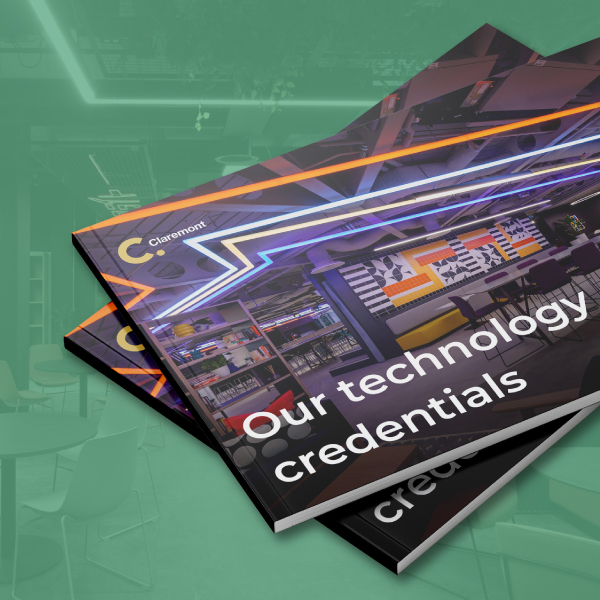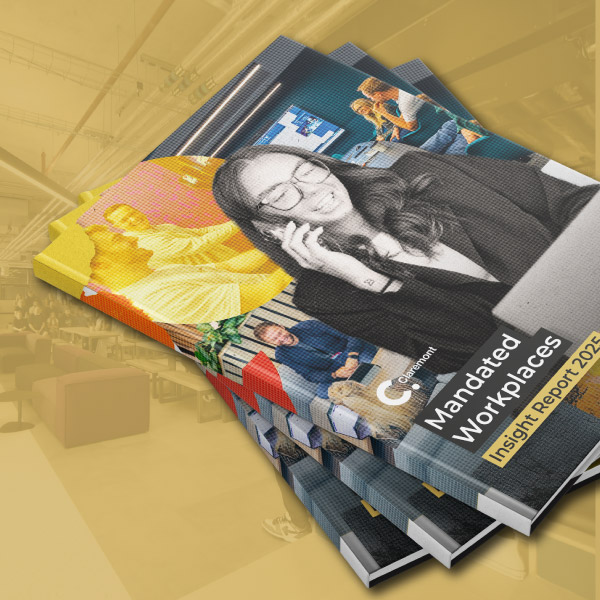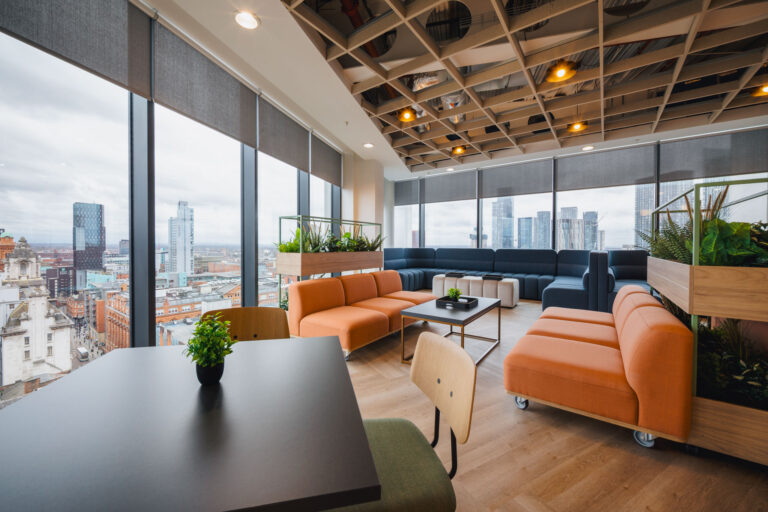
The future of legal workplaces: Trends law firms can't ignore
Date
15 October 2025
Read length
7 min
The landscape of legal workplaces is evolving, shaped by changing expectations from both employees and clients. The once-standard image of rigid cubicles and unused office space is giving way to more thoughtful layouts and design choices that reflect a firm’s brand and values. While the legal sector has traditionally been slower to adapt, it’s now embracing modern workplace trends, such as hybrid working and flexible hours, that are increasingly valued by new talent. This shift signals a meaningful move toward a more agile and people-centred approach within the industry.
Why legal workplaces are changing
Hybrid working, digital transformation, sustainability goals, and the ongoing competition for top talent are among the key factors shaping change within law firms today. While each of these brings its own set of challenges, they also open the door to exciting opportunities for growth and innovation.
Over the past decade, the legal sector has seen substantial expansion. Law firms have collectively acquired nearly 7 million sq ft of office space during this period, with London continuing to lead the way – setting the standard for high-quality, sustainable, and future-ready office environments.
Although London remains the heart of the UK legal market, other cities are increasingly gaining traction. According to Savills, locations such as Manchester, Birmingham, Leeds, Bristol, Glasgow, and Edinburgh are emerging as attractive hubs for law firms, offering premium office space and access to strong talent pools. These cities present compelling options for firms looking to broaden their UK presence and adapt to a changing landscape.
Key trends in legal workplaces
Hybrid and flexible working in law firms
5 years post COVID pandemic and hybrid work models remain the most common work structure. Whilst office mandates are growing in prevalence, a hybrid model remains the desired approach amongst legal professionals with 73% stating that being required to return to the office full time would be a dealbreaker for them in their current role. With this shift in working patterns many law firms are rethinking their spatial needs, placing an emphasis on flexible spaces and reducing the square footage of their offices.
With this in mind, the legal workplace needs to give employees a reason to be in the office. The office must personify a firm’s culture, create a sense of belonging, and justify commutes. Collaboration and interaction are frequently cited as a significant driver for this, with the most productive and innovative ideas often coming when a team finds themselves together in the same setting.
Office design is crucial in creating an environment that allows this to take place. Neighbourhoods and open-plan spaces allow teams to move freely without being tied to one spot or segregated from other teams. Design should prioritise social settings and adaptable spaces that seamlessly support connectivity between employees and teams. Maintaining the professionalism and confidentiality the sector demands can still be achieved through soundproofed pods and quiet zones that minimise distractions.
Our work with DAC Beachcroft in Manchester significantly reduced their real estate by creating an open-plan environment that allows freedom of movement between teams whilst also creating soft boundaries between the departmental neighbourhoods that accommodate individual team growth and collaboration. It’s a clear example of how design can support dynamic working styles while respecting the unique demands of professional environments.
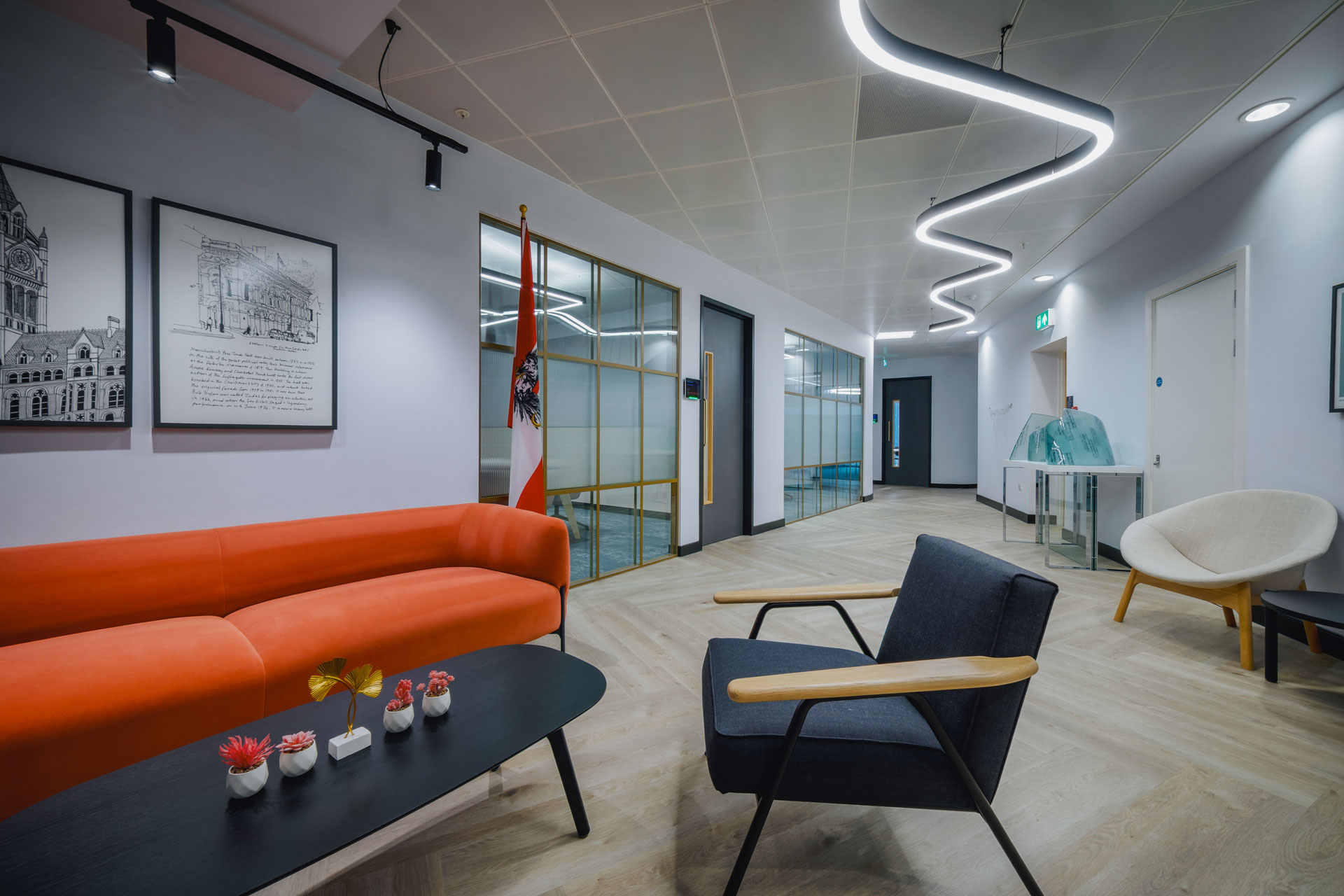
Employee satisfaction focus
PwC state that 88% of the UK Top 100 Law firms have concerns over a shortage of emerging talent in the sector and so competition is fierce. Designing an office with your employees in mind is paramount to both attracting and retaining talent.
The legal industry is a high-pressure profession where stress and burnout are common. To address this, firms must focus on creating workplaces that support mental wellbeing while also encouraging collaboration, productivity, and efficiency.
Organisations that continue to rely on traditional office models may face difficulties attracting and retaining talent, as people increasingly seek environments that feel welcoming and adaptable to their needs.
Carefully considered design elements such as lighting, colour schemes, branding, tech-enabled meeting rooms, spacious circulation areas, access to natural daylight, and biophilic features all contribute to employee wellbeing. Incorporating designated wellbeing rooms into legal office design is a thoughtful and effective way to support employee mental health. These quiet spaces offer staff a chance to step away from their desks and recharge amid the fast-paced nature of legal work. Additionally, including multi-faith rooms ensures that all colleagues feel respected and accommodated, providing a dedicated space for religious practice in an environment that reflects inclusivity and cultural awareness. These choices help create spaces that attract the next generation of legal professionals and give firms a competitive advantage in the ongoing battle for top talent.
Client-centric office design
Whilst the focus on culture and employee wellbeing grows increasingly important in the legal sector, the client remains central to the day-to-day operations of a law firm. The modern day client expects more than just legal expertise – they demand accessibility, convenience and quick responses, and consequently 34% are reducing the number of firms they engage with. With the office acting as a visual representation of a firm, creating a design and environment that balances aesthetic, functionality, and prestige can be a defining factor in wowing clients. Expansion into regions beyond London gives law firms greater proximity to key clients and sectors but with expansion comes a need for office space that is of the standard required to impress clients and present the company in the best possible light.
A well-designed legal office should be creating a welcoming and comfortable atmosphere for clients. Features like brand-centric reception areas, luxurious client suites, easily accessible teapoints, and clear signage help clients feel valued, at ease, and confident in your firm’s capabilities, leaving a positive and lasting impression. Furniture choices are also essential in creating a comfortable environment for clients.
Our work with Shoosmiths prioritises the client experience across multiple offices. In London, a spacious reception sets a welcoming tone, leading visitors through amenities and city views. Edinburgh mirrors this approach with a brand-led, multifunctional reception that adapts to various client needs. Clients are then guided to either a curved suite with a café or collaborative workspaces, all designed for comfort and flexibility.
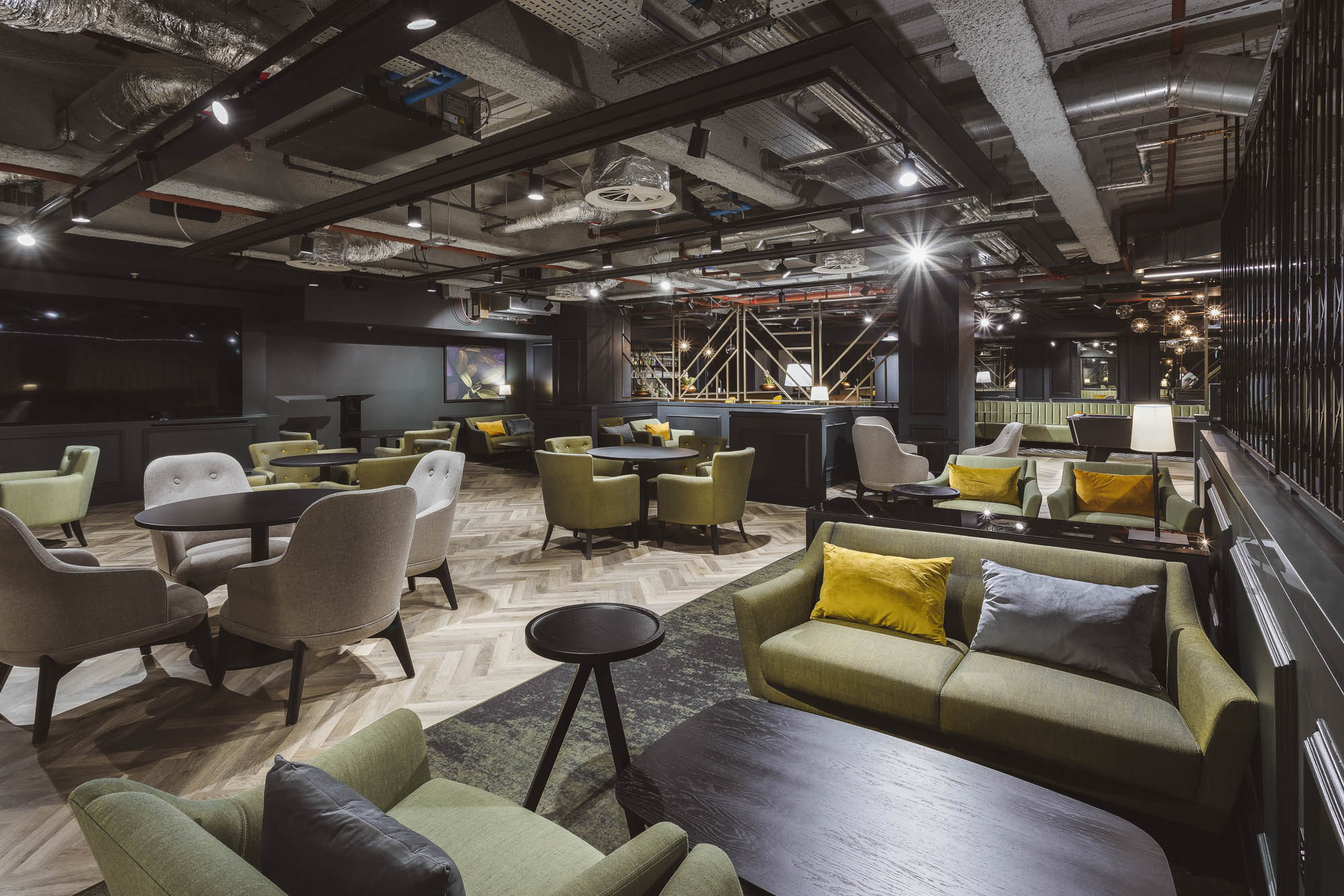
Technology integration
With hybrid working now the norm and client expectations continuing to rise, a tech-enabled workplace has become essential within the legal sector. The ability to connect seamlessly with remote clients and colleagues provides a distinct competitive advantage. Tech-enabled meeting rooms reflect a firm’s commitment to efficiency and professionalism, helping to impress clients and build trust. Whether meetings take place in person or virtually, reliable access to technology remains critical. Firms that prioritise smooth client interactions equip their teams with the tools needed to succeed, while also reinforcing the long-term stability of the business.
The legal sector is set to be one of the industries most impacted by the growth of AI, with 90% of UK firms already integrating AI tools. This rapid adoption is driving a transformation in workplace design, with firms rethinking traditional office layouts to better support technology-led operations. Integrating digital infrastructure, adaptable work zones, and smart systems is becoming essential to ensure that legal teams can fully leverage AI tools and maintain a competitive edge in an evolving industry.
As the legal landscape continues to evolve, embracing a tech-forward approach to workplace design and client engagement is no longer optional; it is a strategic imperative for firms aiming to lead in a digital-first future.
Sustainable and ESG-driven workplaces
There is a growing emphasis on sustainability and environmentally conscious design within legal workplaces, with it acting as both a statement of corporate responsibility and also a commitment to green practices. Firms are increasingly prioritising energy-efficient materials, natural lighting, and biophilic elements to reduce their environmental footprint while creating healthier, more inspiring spaces that reflect their commitment to responsible and forward-thinking practice. Incorporating environmentally conscious elements into design can also reduce operational costs and appeal to environmentally conscious clients.
Ensuring the fit-out process itself is sustainable is equally important, and this commitment is reflected in our work. Our project with Mills & Reeve in Birmingham, for example, was awarded a SKA Silver rating, a benchmark that evaluates key sustainability categories including energy and CO₂, waste, water, pollution, transport, materials, wellbeing, and project delivery. A key achievement of the project was the reuse or repurposing of 69% of existing furniture, significantly reducing waste and the environmental impact of the refurbishment while demonstrating how thoughtful design choices can align functionality with sustainability.
Incorporating sustainable practices into design and the construction process is essential for reducing environmental impact while creating healthier, more efficient, and future-ready workplaces.
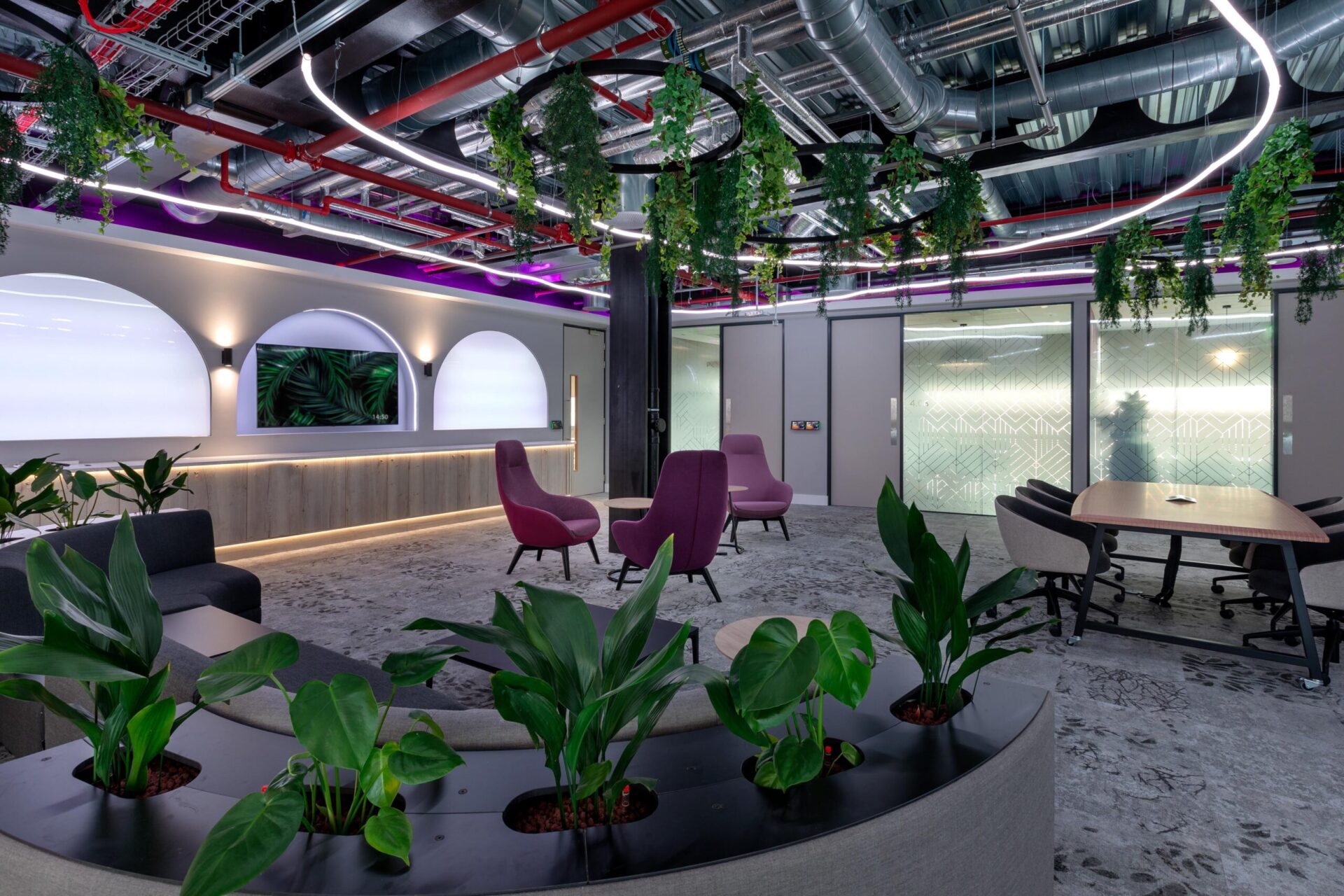
How Claremont are future-proofing law firms
With over 48 years’ experience in the legal sector and working with over 20% of the UK’s Top 100 legal firms, our Destination Office concept goes beyond the basics, creating environments that inspire your team while supporting their day-to-day needs. From creating hybrid-ready HQs to transforming heritage buildings into modern legal hubs – we’ve tackled some of the legal sector’s biggest workspace challenges and are constantly adapting to the evolving needs of the sector.
Want to see know more about how we’re reshaping the legal sector? Check out our legal credentials and see what we can do for you!
See how we could help with your new office interior design or office design and build project here
Get in touch
We love nothing better than talking all things workplace and design – got a question, potential project or just need some guidance?
Drop us a note…


